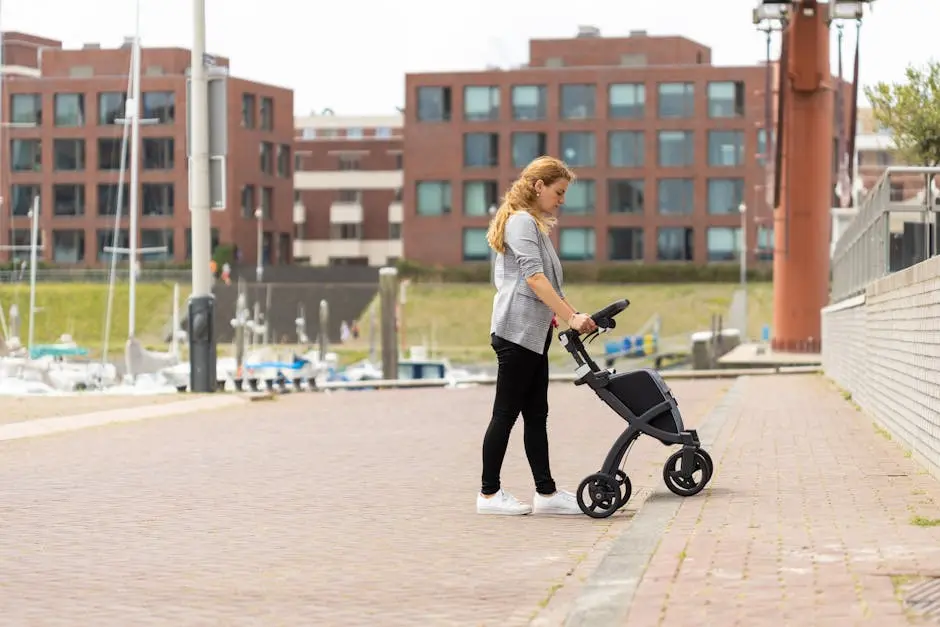Choosing the right mobility aid can make a world of difference for adults who need a little extra support. Walkers come in many shapes and sizes, each designed to cater to different needs. In this blog, we’ll explore the various types of walkers for adults, helping you understand their unique features and benefits.
Standard Walkers: The Basics
Standard walkers are the most basic type, offering four sturdy legs for optimal support. They require the user to lift and move them one step at a time, making them ideal for those who need significant stability. Although they might seem simplistic at first glance, standard walkers serve an essential role in providing balance and support to individuals who need that little bit of extra help while moving around. They are an excellent choice for someone who is starting their recovery journey after surgery or for those with conditions that affect balance.
One of the advantages of standard walkers is their lightweight design, which makes them easier to maneuver, especially within the home. This is crucial for individuals who might struggle with heavier equipment. Furthermore, newer designs come with adjustable heights to better match users’ specific needs, ensuring proper posture and reducing strain on muscles and joints. For those interested in a more personalized solution, adjustable standard walkers might be what you need.
Two-Wheeled Walkers: A Balance of Stability and Ease
Two-wheeled walkers offer a unique mix of stability and ease. These walkers have wheels on the front legs, which means users can push them while walking, rather than lifting with each step. This can significantly reduce the effort required and make navigating longer distances much easier. For those who don’t need as much support as a standard walker provides but still feel a little unsteady on their feet, a two-wheeled walker can be the perfect compromise.
These walkers are particularly useful for individuals who can manage without full-time support but occasionally feel unstable. The wheels allow for smoother operation over flat surfaces and even slightly uneven terrain, which is something a standard walker might struggle with. Many models also come equipped with hand brakes, offering a more secure experience for those who might feel nervous about losing control while moving around. In these situations, a brake system can enhance the user’s confidence significantly.
Rollators: A Versatile Choice for Active Users
Rollators are often the top choice for more active users, offering a high level of functionality and convenience. They come equipped with four wheels, allowing for effortless movement across various terrains. More so, most rollators come with a built-in seat which provides the luxury of resting whenever the user feels fatigued, making them perfect for extended outings.
Another notable feature is the storage capacity. Many rollators are designed with bags or baskets to hold personal items, groceries, or any other essentials the user might need on their journey. This functionality enhances independence, as carrying items while using the rollator becomes a breeze. Furthermore, with the inclusion of hand brakes, rollators allow users to maintain complete control over their movement, reducing anxiety about potential falls or uncontrolled rolling.
For those looking for additional comfort and customization, there are rollator models with ergonomic hand grips and padded seats. This added comfort not only alleviates pressure on the hands and wrists but also ensures users can sit comfortably for longer periods. Some even feature easy-to-use folding mechanisms, making transport and storage convenient. A comfortable rollator becomes a valuable companion for those who maintain an active lifestyle.
Knee Walkers: An Alternative to Crutches
Knee walkers are a fantastic alternative for those who have temporarily lost the ability to walk due to foot or ankle injuries. Unlike crutches, which can cause discomfort and require upper body strength to use effectively, knee walkers provide a soft, padded platform that supports the knee of the injured leg, allowing the user to push themselves along with the healthy leg.
These devices are particularly advantageous for individuals aiming to maintain their active lifestyle without compromising mobility during recovery. Not only do they reduce the risk of overexerting other parts of the body, but they also promote faster healing by minimizing unnecessary pressure on the injured limb. With their convenient steering mechanism, knee walkers offer superior maneuverability compared to crutches. They also come with storage compartments, allowing for a more seamless, hands-free experience when on the move. For more insights on using a knee walker, understanding its benefits can be truly eye-opening.
Hemi Walkers: Support for One-Sided Weakness
Hemi walkers are perfect for individuals who have weakness or limited mobility on one side of their body. These walkers provide more support than a cane while being lighter and more maneuverable than a traditional walker. This makes them particularly suitable for those who might be recovering from a stroke or surgery that has affected one side of their body.
One of the key features of hemi walkers is their unique design, which allows them to be used one-handed. This advantage is significant for those who only have the ability to use one arm effectively. Furthermore, the versatility of a hemi walker means it can be used to navigate tight spaces where a traditional walker might be impractical. This kind of adaptive equipment can drastically improve quality of life for users by increasing their level of independence.
Finding the Perfect Walker for Your Needs
Understanding the different types of walkers can empower you to make an informed decision that best suits your lifestyle and mobility needs. Whether you need a basic walker for occasional use or a more robust rollator for daily activities, there’s a perfect match out there for everyone. Remember, the right walker can greatly enhance your independence and quality of life.


















